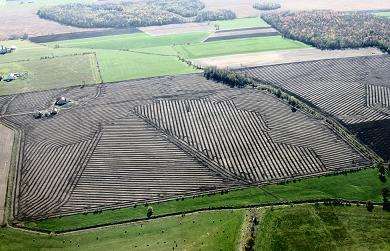Agriculture Canada and the University of Ottawa included in partnership
By Diego Flammini
Assistant Editor, North American Content
Farms.com
The Ontario Soil and Crop Improvement Association (OSCIA), and researchers from the University of Ottawa as well as from the Ministry of Agriculture will work together to study the potential crop yield benefits of controlled tile drainage.
The project is called “Controlled Tile Drainage – Calculate Your Benefits.” Scientists look to develop a new tool that allows farmers to calculate the crop yields with controlled tile drainage under a variety of conditions.
“The (Ministry of Agriculture’s) research indicates that there may be economic benefits of farmers under specific field conditions,” Gord Green, OSCIA president, said in a release. “Under drought conditions, research has confirmed as high as a 25 per cent increase in corn yield where controlled drainage was used to retain water to better supply the growing crop.”

A field with tile drainage installed.
Photo: OMAFRA
Researchers involved with the project say the new information will be a valuable asset as farmers continue to improve risk management and nutrient availability techniques.
“Farmers are continually looking for ways to better manage risk,” Dr. David Lapen, an AAFC scientist involved with the project, said in the release. “If tiles are already installed systematically as a capital investment, relatively little additional expense is required to add a tile flow control structure. We have seen recent increases in the adoption of controlled tile drainage in Ontario, in particular eastern Ontario.”
“With extremes in weather increasing due to climate change, every competitive edge counts,” Dr. Michael Sawada, University of Ottawa scientist, said in the release. “Additionally, controlled drainage can reduce the flow of phosphorus and other nutrients to help protect our water resources.”
The research is scheduled to continue until the winter of 2018.